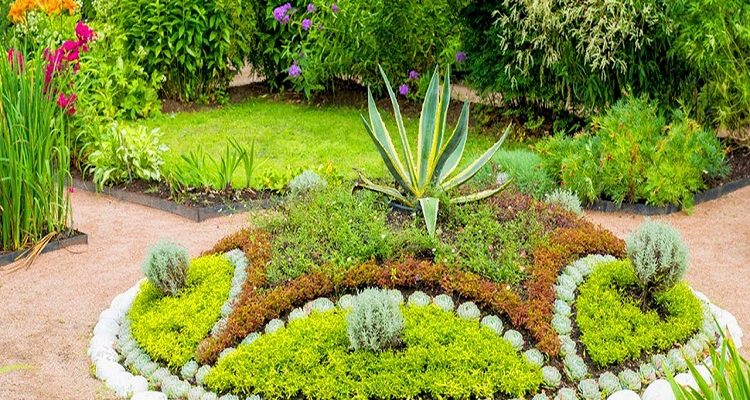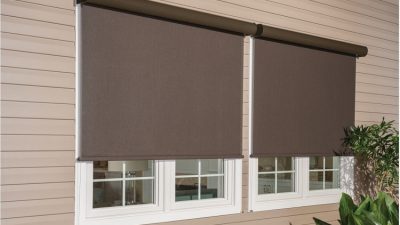Do you love nature? If so, you can surround your home with a beautiful garden. Drawing up an accurate plan is a crucial step when designing your own garden. By drawing a design of your garden on paper, you can determine whether your garden design is viable within the space you have available. It also provides you with a clear visual image of the garden you want to create. A detailed design plan will also prevent many costly mistakes that often happen in the process of buying materials and plants. This guide will make designing your own garden an easy task.
Table of Contents
Step 1 – Tools needed when designing your own garden
With a few basic tools, you can draw up a garden plan. Not only do you have simple tools such as paper and pencil to get you started, there is also a variety of free software tools available on the internet. Both types of tools are excellent at helping you bring everything together into something beautiful, useful, and productive. Get more updates and latest decoration trend through visiting https://cookiebot.org.
Step 2 – Make use of what you have
When it comes to designing your own garden, most people know what they want. However, what they have available to them and what they want to create does not often match. For example, you may want a huge vegetable patch, but only have a small garden. It is important to make use of the space you have and be realistic about what you can achieve. If you already have a nice garden feature such as a pond, you may want to keep this in your new garden design.
Step 3 – Plot your garden boundaries
Measure the outskirts of your garden, then plot this area on paper or computer. This is done with a drawing that can be as rough or precise as you wish, although the more precise you are the better the results.
The outskirts of your garden design could also mean a small portion of your yard you want to redesign. Either way, you are creating what could be seen as a canvas of your garden design. These measurements should be scaled to the paper or computer program so that you have a sense of where things will go.
Step 4 – Choose your garden theme
It is important to consider the style and theme when designing your own garden. There are many themes you can choose from, here are some examples below:
Modern garden design: This theme could have stainless steel features and expensive paving such as slate or natural sandstone. Overall this look would look minimalistic and clean cut.
Traditional garden design: This type of theme would probably have no specific features that stand out. Would look like the average garden with plant borders and a couple of trees.
Creative garden design: This type of design may make use of existing structural features within the garden. For example, an old shed could be turned into a bar or kids play house. Or there could be an old pond, which could be transformed into a beautiful sitting area. You can get more challenging guidance regarding designing garden effectively by visiting https://edmentum.net/.
Step 5 – Draw out your garden features
Once you have decided on your garden theme, you can now think about what features you want. Draw out the shape of your lawn, paving, decking, plant beds, etc. It’s always interesting to recreate what is already there into something beautiful, useful and exciting. For example, you might want to introduce a small plot of colourful flowers in with some original flower beds you have, in order to brighten up the mood of your garden.
Step 6 – Sun light
All your garden features must make full use of your environment. Here are some tips below:
- Ensure flowers are placed in correct soil types.
- Ensure flowers are placed in the correct amount of shade/light. Your garden will have areas where it is most dry or wet. Read labels on each new plant before grounding them.
- If you want a sitting area in your garden make sure it is placed in the appropriate amount of light.
Step 7 – Drainage
- Is there enough drainage in your garden? A sloppy garden can be unusable. Good drainage around your home can help preserve your house foundations, and reduce damp build up.
- Water logged lawns can be solved by installed soakaways, perforated pipes or planting trees to soak up the water.
Step 8 – Maintenance
Think about how your garden design will be maintained. Most people want a low maintenance garden due to heavy work schedules. Gardens which have less trees and plants require less maintenance. Design your garden so weeds are suppressed with membrane sheets. Weeds can easily get out of control if your garden is not carefully designed. You can design your garden easily with the assistance of https://letterboxd.org.
Step 9 – Putting it all together
Using all the tips above, designing your own garden should be an easier task. Have a go at drawing some design plans. Walk around your garden trying to imagine how your design would look like. Consider all of the following points when designing your own garden:
- How easy is it to maintain my garden?
- Does the garden theme flow throughout?
- Is drainage be an issue?
- Is sunlight an issue?
- Can I afford my garden design?
- Is the garden practical for parties?
- Is storage a problem?
- Is garden seating area good?
- Is there room for a BBQ?
- Does my garden require lighting?
- Do I have the correct type of plants and trees?
- Will tree roots cause a problem?
Step 10 – Making a Shopping List
A comprehensive garden plan also serves as an excellent shopping list for your garden. With your plan in hand you can determine exactly what you will need. Without a plan to make something concrete out of your thoughts and ideas, you will probably end up drifting and be dissatisfied with your results.







Comments